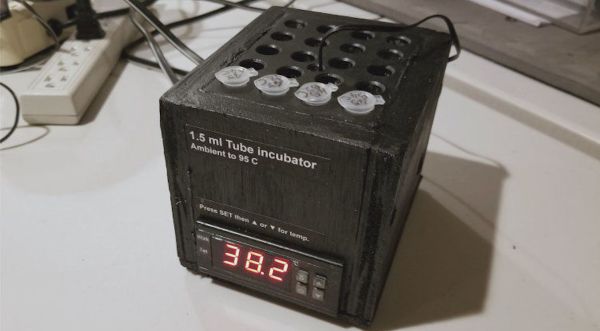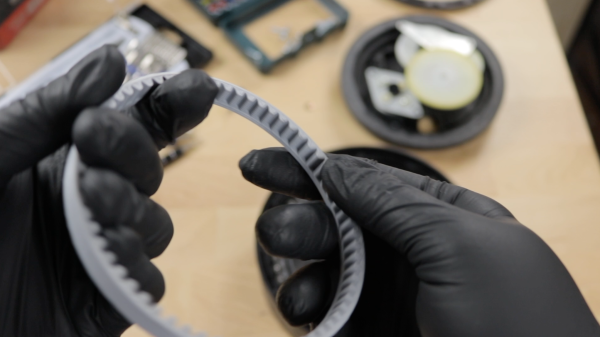[abizar] lucked into some aluminum blocks, one of which had test-tube-sized holes in it–just the thing to turn into a dry bath for his biology projects.
He stuck a 100W positive temperature coefficient heater into the bottom of the block using silicone glue, and the heater heated the block up in around half an hour. He connected a temperature controller to maintain the temperature at an ambient 95C, with a controller monitoring a thermistor to keep the block within the pre-determined range. The heater has an auto shutoff if it got too hot, so [abizar] felt safe keeping the dry bath on, unmonitored.
The aluminum block sits in a plywood box lined with rubber from an inner tube, with the heater underneath the block and the temperature controller underneath that, separated by more plywood from the heat. The result? A dry, temperature regulated bath for 20 1.5ml test tubes.
Looking to tool up? Check out the plethora of biohacking tools on Hackaday, including a DIY CO2 incubator, a basic biohacker’s toolkit, and a cheap electrophoresis rig.



 He built a LEGO-looking enclosure for the battery as well, based on a 2×6 brick. The battery pack sits behind the motor with the tail light on top and holds the radio control receiver as well the twin LiPos. The head and tail lights pack 24-LED discs and are controlled by [James]’ FS-GT2B 3-channel RC transmitter. Its third channel is just a button, and he can trip that button to activate the lights with the help of a Turnigy receiver-controlled switch.
He built a LEGO-looking enclosure for the battery as well, based on a 2×6 brick. The battery pack sits behind the motor with the tail light on top and holds the radio control receiver as well the twin LiPos. The head and tail lights pack 24-LED discs and are controlled by [James]’ FS-GT2B 3-channel RC transmitter. Its third channel is just a button, and he can trip that button to activate the lights with the help of a Turnigy receiver-controlled switch.


















